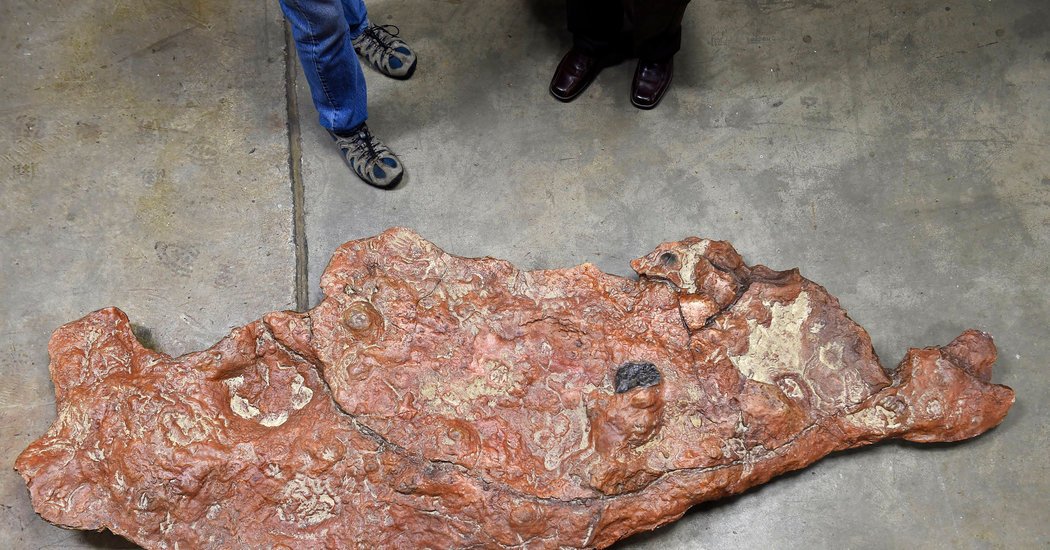
NASA accidentally discovers largest pool of dinosaur tracks in its own backyard
As a wonderful follow up to the discoveries of prehistoric creatures, as many as 70 tracks of around 8 such creatures have been discovered in the backyard of the federal agency, NASA by a dinosaur-track expert named Ray Stanford.
Nasa’s Goddard Space Flight Center in Greenbelt, Maryland unknowingly housed the footprints of all these creatures of the Cretaceous era until it was accidentally revealed by Stanford while he had hiked to the place to drop his wife who serves as an employee is the organization. While on his way back his eyes fell on a chunk of rock that had withered from a hill which proved to be exactly of the color as that of the rock piece he had discovered several years ago. This led to an 8.5-foot long slab of sandstone unearthed from the ground of Nasa’s Goddard Space Flight Center.
The slab marked the footprints of the pre-historic dinosaurs and other extinct mammals who had once traded their path along the Nasa’s grounds. Martin Lockley, a paleontologist with the University of Colorado, Denver said that the concentration of mammal tracks on that particular site was higher in magnitude than in any other site. A slab with such a small size having as many tacks as 70 in such fewer frequencies of as short as few hours, to be precise have shocked many scientists.
The slab depicted instances of- a plant-eating, tank-sized, armor-plated nodosaur, some twenty-six footprints of mammals of the size of squirrels or prairie dogs, footprints of some flying reptiles commonly known as pterodactyls, footprints of small badger-sized mammals and crow-sized predators of the Tyrannosaurus race. The slab also showcased four pairs of theropod dinosaur tracks which seemed to have been resulted when the crow-sized carnivores would have made a coordinated hunting sweep through the area. It also possessed an instance that seemed like a fossilized worm.
The remains from the Cretaceous era are very rare and mostly depict teeth and jaws. This rare discovery has proved to be a unique asset that will help to show up a new direction to scientists trekking this field.


